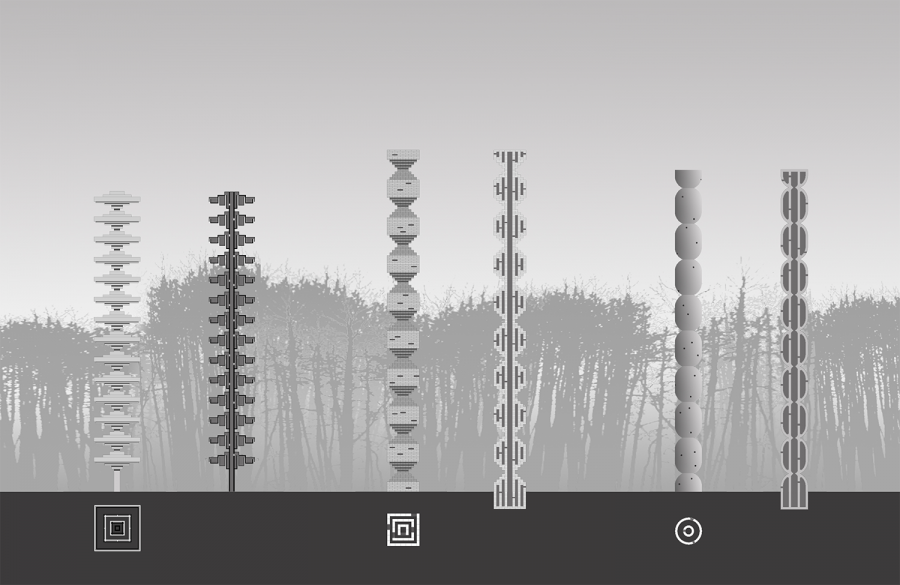Bat House 蝙蝠之家

The aim is to interest people in bats and to drive away common stereotypes by a close look at their living conditions!
To attract the people’s attention the design must create an extrovert atmosphere deliberately. The accomodations of the bats are not covertly scattered here and there, but clustered, high-piled and self-confidently presented. The typical small bat house from the countryside becomes a skyscraper in London.
From the other riverbank, from bridges and the numerous green spaces near the LWC(London Wildlife Conservancy), one gets attracted to the LWC bat houses as they create an impression of sculptures along the river. Thus, the bat houses have the potential to become an adequate landmark, especially to tourists and passengers of Thames transportation facilities.
Each bat house has a structure that fits the animals roosting requirements. Since these requirements are quite diverse, there are three types of houses that differ in material, spacious arrangement and size. Type A has a wooden structure, type B is made out of brick and type C of concrete. Consequently, the bat houses appear in different colours: the wooden ones are brown-silver, the brick-ones are dark red and the concrete-ones are a light grey. Those materials call for different methods of construction, which affects their inner composition.
To protect the roosting bats from disturbances, the majority of the accomodations is placed on the very top of the bank. This way, they are separated from the bat observation deck path by trees and bushes.
The height of the bat houses adds up to 15m. In addition, it is imaginable that some of the accomodations continue into the soil as caves. Replicability in other locations is well conceivable, since the heights are adaptable to change.
我们在伦敦野生动物保护区的湿地上设计了一系列蝙蝠小屋。它们没有隐蔽在树冠草丛之间,而是像雕塑装置一样耸立在泰晤士河边的滩涂上,像地标一样自信地呈现出来。来往的游客和使用泰晤士河上交通设施的乘客们都能看到,我们希望能通过这样的设计引起人们对蝙蝠和附近栖息的其它野生动物的兴趣,通过近距离观察它们的生活环境来消除一般的刻板印象。
我们以当代艺术雕塑为灵感来设计这些蝙蝠小屋,通过不同的材质去适配蝙蝠生活需求的多样化。不同的材质导向不同的结构和构造方式,也产生出不同的建筑色彩和形态。我们最后选定了3种材料,设计出3种不同的蝙蝠小屋:A型采用木结构,B型采用砖结构,C型采用预制混凝土结构。蝙蝠可以通过不同形态的孔洞进入小屋内部,寻找满意的栖身之处。

Project details
-
PROJECT LOCATION:London Wetlands Centre, London, GB
-
项目地点:英国伦敦野生动物保护区
-
WORKING RANGE:Landscape Design / Installation
-
工作范畴:景观设计 / 装置
-
PROJECT STATUS:Finished
-
项目状态:完成
-
DESIGN STARTING:Sept 2007
-
设计开始:2007年9月
-
PROJECT FINISHED:Oct 2008
-
项目完成:2008年10月
-
PRINCIPLE DESIGNER:Wei Cai, Philipp Buschmeyer
-
主持设计师:蔡为, Philipp Buschmeyer


